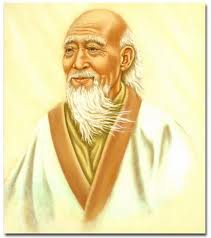Daoism
Along with Confucianism, “Daoism” (sometimes called “Taoism“) is one of the two great indigenous philosophical traditions of China. As an English term, Daoism corresponds to both Daojia (“Dao family” or “school of the Dao”), an early Han dynasty (c. 100s BCE) term which describes so-called “philosophical” texts and thinkers such as Laozi and Zhuangzi, and Daojiao (“teaching of the Dao”), which describes various so-called “religious” movements dating from the late Han dynasty (c. 100s CE) onward. Thus, “Daoism” encompasses thought and practice that sometimes are viewed as “philosophical,” as “religious,” or as a combination of both. While modern scholars, especially those in the West, have been preoccupied with classifying Daoist material as either “philosophical” or “religious,” historically Daoists themselves have been uninterested in such categories and dichotomies. Instead, they have preferred to focus on understanding the nature of reality, increasing their longevity, ordering life morally, practicing rulership, and regulating consciousness and diet. Fundamental Daoist ideas and concerns include wuwei (“effortless action”), ziran (“naturalness”), how to become a shengren (“sage”) or zhenren (“realized person”), and the ineffable, mysterious Dao (“Way”) itself.
Lao Zi (Lao-Tzu)

Laozi is the name of a legendary Daoist philosopher, the alternate title of the early Chinese text better known in the West as the Daodejing, and the moniker of a deity in the pantheon of organized “religious Daoism” that arose during the later Han dynasty (25-220 CE). Laozi is the pinyin Romanization for the Chinese characters which mean “Old Master.” Laozi is also known as Lao Tan (“Old Tan”) in early Chinese sources (see Romanization systems for Chinese terms). The Zhuangzi is the first text to use Laozi as a personal name and to identify Laozi and Lao Tan. The earliest materials associated with Laozi are in the Zhuangzi’s Inner Chapters. The Outer Chapters of that work have ten logia in which Laozi is the main figure, four of which contain direct attacks on the Confucian virtues of ren, yi, and li that are reminiscent of passages from the Daodejing and probably date from the period in which that collection was reaching some near final form. The earliest ascription of authorship of the Daodejing to Laozi is in Han Feizi and the Huainanzi, but several themes from the Laozi logia of the Zhuangzi are traceable into the Daodejing and on at least two occasions in that text Laozi counsels following dao (the Way) to possess de (virtue). Laozi became a principal figure in institutionalized religious forms of Daoism. He was often associated with many transformations and incarnations of the dao itself.
Confucianism, Daoism (Taoism), and Buddhism commonly name the three main pillars of traditional Chinese thought, although it should be obvious that like any “ism,” they are abstractions — what they name are not monolithic but multifaceted traditions with fuzzy boundaries and complex histories and internal divisions. “Daoism,” in particular, needs to be handled with care, for it designates both a philosophical tradition and an organized religion, which in modern Chinese are identified separately as Daojia and Daojiao, respectively.
Philosophical Daoism traces its origins to Laozi (or Lao-tzu, in the “Wade-Giles” system of transliteration), who flourished during the sixth century B.C.E., according to Chinese tradition. According to some modern scholars, however, Laozi is entirely legendary; there was never an historical Laozi. In religious Daoism, Laozi is revered as a supreme deity. The name “Laozi” is best taken to mean “Old (lao) Master (zi),” and Laozi the ancient philosopher is said to have written a short book, which has come to be called simply the Laozi. When the Laozi was recognized as a “classic”(jing) — that is, accorded “canonical” status, so to speak, on account of its profound insight and significance — it acquired a more exalted and hermeneutically instructive title, Daodejing (Tao-te ching), commonly translated as the “Classic of the Way and Virtue.” Its influence on Chinese culture is pervasive, and it reaches beyond China. Next to the Bible, the Daodejing is the most translated work in world literature. It is concerned with the Dao or “Way” and how it finds expression in “virtue” (de), especially through what the text calls “naturalness” (ziran) and “nonaction” (wuwei). These concepts, however, are open to interpretation. While some see them as proof that the Laozi is a deeply “mystical” work, others emphasize their contribution to ethics and/or political philosophy. Interpreting the Laozi demands careful hermeneutic reconstruction, which requires both analytic rigor and an informed historical imagination.